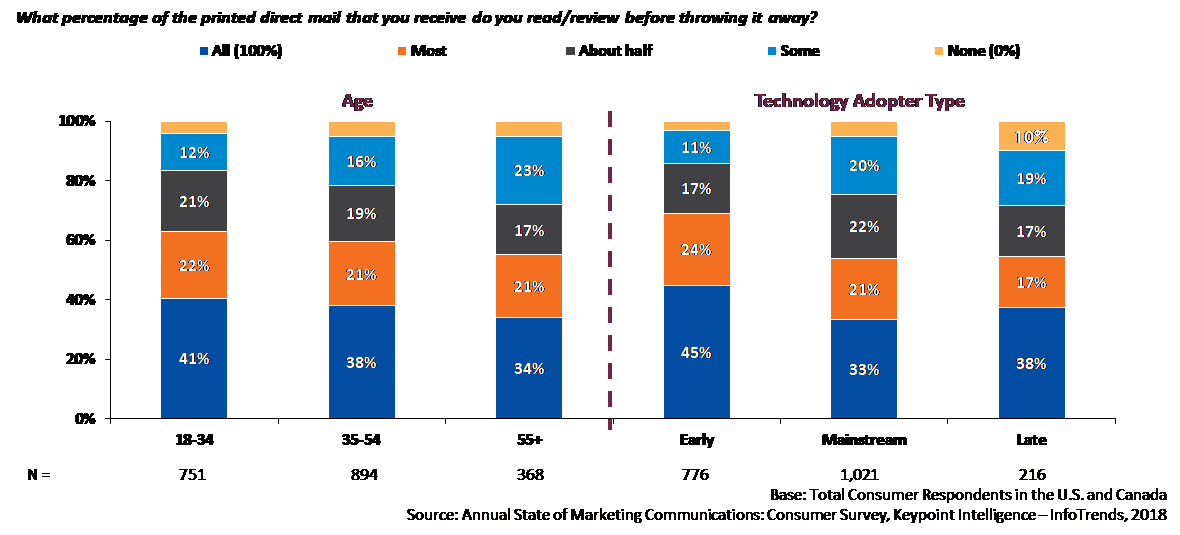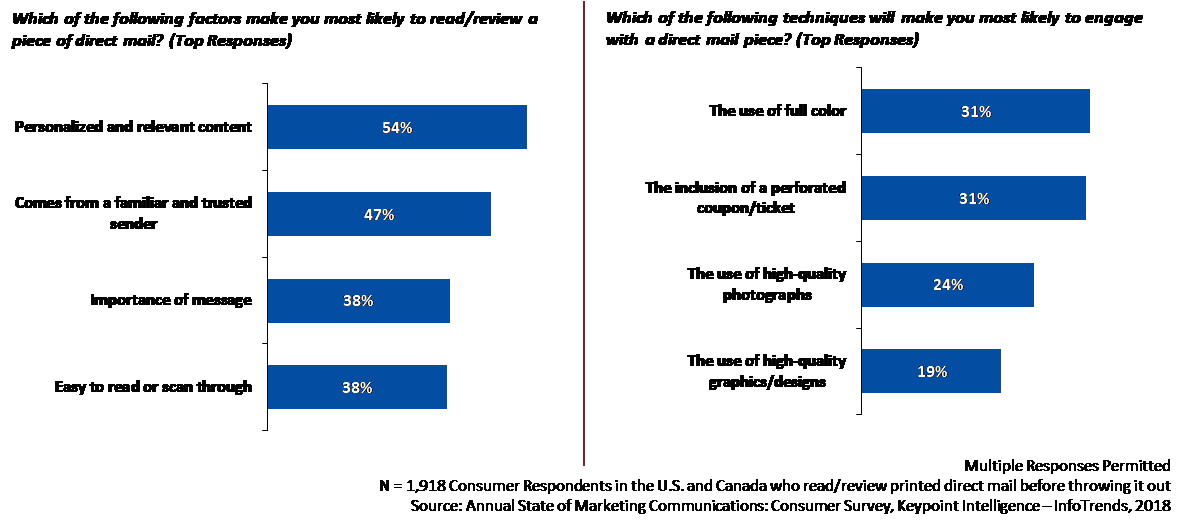Plenty of original equipment manufacturers (OEMs) like to talk about the many capabilities of their hardware solutions. While it’s true that some print technologies are quite flexible, not all of them will be ideally suited for every situation. The printing industry is extremely diverse, and there is a great deal of additional variety within its subsegments. Mail pieces are just one example, and they represent one of the larger sectors within the print industry. Although mailed communications might seem uniform, they can have multiple variations in color, paper type, and volume quantity.
Inkjet and toner are two different printing technologies that bring their own unique set of advantages to the table when it comes to the creation of mail pieces. Fully understanding the advantages and disadvantages of each allows you to make the very best decisions for your own mailing campaigns.
The Importance of Mail
The advent of the digital age has brought much change to our industry. The proliferation of digital technologies like laptops, tablets, and smartphones has opened up new lines of communication. Email is now far and away the most commonly used communication channel, which has caused some to declare — rather prematurely — that print is dead. While it is true that print cannot compete with email in terms of sheer volume, direct mail remains the second most common form of communication. According to the United States Postal Service (USPS), an average of 472.1 million pieces of mail are processed and delivered each day.
Although direct mail may not be as prolific as email, it is still widely used. More importantly, it can help drive engagement. According to research from Keypoint Intelligence, most consumers reported reading and reviewing their direct mail before discarding it. This was true across all age groups, even the youngest respondents. Perhaps even more interesting, the tech-savvy early adopters were even more likely to read and review their direct mail than the other groups. On average, nearly 60% of total respondents read all or most of their printed direct mail before throwing it out. This speaks to the continued relevance of direct mail as a communication channel.

Figure 1: Share of Printed Direct Mail that Is Read
How Does Inkjet Measure Up?
An inkjet printer can be simply defined as any device that prints by propelling (or jetting) droplets of ink onto paper. Inkjet machines are generally less expensive than toner printers, so they are traditionally viewed as an affordable alternative for printing companies that hope to generate content on a budget. For those that are willing to invest in more expensive inkjet machines, however, the quality can be quite good. High-end inkjet devices can produce vibrant color and detail on various paper types, including glossy, matte, photo metallic, and satin.
Today’s consumers receive a lot of direct mail, so it is important for providers to ensure that their communications stand out. Print providers with inkjet capabilities can offer their clients a wide array of professional-looking communications that will get noticed in customers’ mailboxes. Although toner-based devices are faster, inkjet printers can also create documents in a timely manner. Inkjet technology is ideally suited for producing short-run mail campaigns that can grab attention with full color and personalization. As shown in Figure 2, personalized content and color are the top factors that get consumers to read/engage with direct mail.

Figure 2: Factors and Techniques that Make Direct Mail Stand Out
That said, inkjet technology has its limitations. Although the machines are generally less expensive than some other print technologies, inkjet inks can be pricier. As a result, you will pay more for supplies in the long run. Inkjet inks can also bleed or smudge if they are not handled properly right after printing. Certain inkjet inks (e.g., aqueous) can also bleed when exposed to water — and this is a problem that is frequently encountered with mail deliveries.
How Does Toner Measure Up?
Toner printers shine in their ability to produce consistent, accurate print runs at high volumes. A toner printer is likely the best bet for any high-volume mail campaign that needs to be produced quickly. When created using a toner device, printed communications can be handled immediately with no risk of color bleeding. At the same time, however, toner machines are often expensive, particularly when printing in color. This can limit a printer’s capacity to purchase and maintain toner devices on a larger scale. One the equipment has been acquired, however, toner-based devices are often simpler to maintain.
The Bottom Line
When it comes to producing direct mail communications, there is no single technology that is superior for all applications. Both toner and inkjet have their benefits as well as their limitations. While inkjet technology is better suited for handling smaller, more personalized direct mail communications, it cannot compete with the speed of toner-based devices. Inkjet is a great choice for delivering eye-catching pieces that will likely make recipients more inclined to engage.
Although toner-based technologies form the backbone of many direct mail campaigns, they fall short with color production. Businesses that require the capacity to send out mostly monochrome deliverables like bills and statements will likely be better served with a toner device.
Today’s savvy mailers have discovered that they must be masters of multiple printing technologies. As is the case with many other industries, the trick is understanding which technology is best suited for the specific task at hand.
Colin McMahon is a Research Analyst at Keypoint Intelligence. He primarily supports the Business Development Strategies and Customer Communications consulting services. In this role, he creates and refines a high volume of written content, including forecasts, industry analysis, and research/multi-client studies. He also assists with the editing and formatting processes for many types of deliverables.
This article originally appeared in the July/August, 2020 issue of Mailing Systems Technology.











